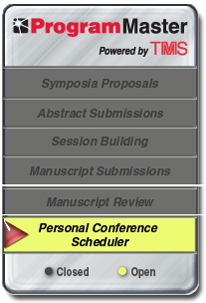

|

Young professionals in the early stages of their careers need plenty of opportunities to network with experienced materials scientists and engineers and to gain recognition for their work and their abilities in the larger materials community. That’s why TMS2013 offers a number of activities and events designed to meet the specific needs of young professionals, aged 40 and under, working in the materials science and engineering fields.
The following TMS2013 events and competitions are designed specifically for early-career professionals.
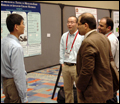 Technical Division Young Professional Poster Contest
Technical Division Young Professional Poster Contest
Henry B. Gonzalez Convention Center, Parkview and Towerview Lobbies
Young professionals will display posters related to each of the five TMS technical divisions: Electronic, Magnetic & Photonic
Materials; Extraction & Processing; Light Metals; Materials Processing & Manufacturing; and Structural Materials. The winner in each
division will be awarded $500. Poster submissions are now closed.
Meet the Candidate Employment Poster Session
Sunday, March 3, 2013, 6:30 p.m.
Henry B. Gonzalez Convention Center, Room 213
Organized by the TMS Young Leaders Committee, this session allows young professionals to connect with potential employers for post-doctoral, full-time, or faculty positions. Candidates present posters on their qualifications and research interests to potential employers from universities, industries, and national labs.
Poster submissions are now closed.
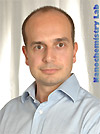 Federation of European Materials Societies Young Leader International Scholar
Federation of European Materials Societies Young Leader International Scholar
Monday, March 4 at 2:35 p.m.
Henry B. Gonzalez Convention Center, Room 201
Vincenzo Palermo, Institute for Organic Synthesis and Photoreactivity, CNR - National Research Council of Italy
Lecture Title: "Not a Molecule, Not a Polymer, Not a Substrate . . . the Many Faces of Graphene as Chemical Platform"
What is, exactly, graphene?
While we often describe graphene with many superlative adjectives, it is difficult to force this (superlative) material within a single chemical class. Graphene typical size is atomistic in one dimension of space, and mesoscopic in the others two. This provides graphene with several, somehow contrasting properties. Graphene can be can be patterned, etched and coated as a substrate. Though, it can also be processed in solution and chemically functionalized, as a molecule. It could be considered a polymer, obtained by bottom-up assembly of carbon atoms, but it can be obtained from top-down exfoliation of graphite (a mineral) as well. It is not a nano-object, as fullerenes or nanotubes, because it does not have a well-defined shape; conversely, it is a large, highly anisotropic, very flexible object, which can have different shapes and be folded, rolled or bent to high extents.
In this presentation, we will discuss the state of the art and possible applications of graphene in its broader sense with a particular focus on how its "chemical" properties, rather than its well-known electrical ones, can be exploited to develop original science, innovative materials and new technological applications.
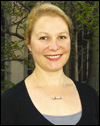 Young Leader Tutorial Luncheon Lecture
Young Leader Tutorial Luncheon Lecture
Tuesday, March 5, 2013, Noon
Grand Hyatt Hotel, Texas Ballroom D
Julia R. Greer, Assistant Professor of Materials Science and Mechanics, California Institute of Technology (Caltech)
"A Scientist, a Parent, a Teacher, a Mentor . . . How to Balance it All?"
Note: Tickets are not required for this event, but attendees may purchase an optional boxed lunch through the conference registration form.
In my Young Leaders Tutorial Luncheon Lecture, I would like to focus on the issues of work/life balance as a woman in academia and on how to balance the professional and personal activities without feeling overwhelmed.
"Would you be willing to participate in a panel discussion on work/life balance at Meeting/Conference/Workshop X please?" is the question I hear quite often – maybe because I am a faculty advisor to Women Mentoring Women and Society of Women Engineers at Caltech, or maybe because there aren’t enough women in scientific/engineering academia, or maybe because people see me roller blading on campus with two kids in the stroller on the way to work. Whatever the reason, I have been thinking about these issues for quite some time now – whether it is possible to strike a meaningful and satisfying balance between one’s professional and personal "selves." In all honesty, there are days (nights) where I feel like I don’t ever stop working. Now that I am a Mom of two little girls (one is four and another one is almost two), trying to set up a work-life balance has been more challenging than I had ever imagined. Yet it is of key importance as I find that spending quality time with my children makes me a better scientist and intense scientific pursuit facilitates better parenting. In this lecture, I will focus on discussing the issues associated with trying to survive in the world where career, family, and hobbies simultaneously require 100% of one’s attention. I will provide examples of effective and ineffective situations, statistical data, and bring to light some of the perhaps surprising consequences of neglecting to find one’s internal balance.
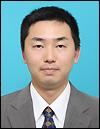 Japan Institute of Metals Young Leader International Scholar
Japan Institute of Metals Young Leader International Scholar
Date: Wednesday, March 6 at 11:40 a.m.
Henry B. Gonzalez Convention Center, Room 201B
Yoji Miyajima, Interdisciplinary Graduate School of Science and Engineering, Tokyo Institute of Technology
Lecture Title: "Quantification of Lattice Defects in Severe-Plastic Deformed Metals"
Abstract: It has been known that metals having ultra-fine grains (UFGs) produced by severe-plastic deformation processes exhibit unique mechanical properties such as hardening by annealing and softening by deformation in UFG-Al [1]. Although the unique phenomena are associated with the high dislocation density LV (m-2) and high density of grain boundary SV (m-1), there are few quantitative reports about those lattice defects. In the present study, an accumulative roll bonding (ARB) process was used to fabricate the UFG metals. The change in LV, depending on the number of the ARB cycle, was quantified using transmission electron microscopy/scanning transmission electron microscopy (TEM/STEM) and electrical resistivity measurements at 77 K. As a result, it was revealed that LV is almost constant for all ARB processed metals, with values of around 1.0×1014m-2 and 5.0×1014m-2 for UFG-Al and UFG-Cu, respectively.
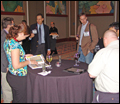 Young Professional Happy Hour Reception
Young Professional Happy Hour Reception
Wednesday, March 6, 2013, 6:00 p.m.-7:00 p.m.
Grand Hyatt Hotel, Presidio B
This reception provides young professionals the opportunity to network with more experienced TMS members in a relaxed, social atmosphere.
|